Brad Nelson
Administrator
עַבְדְּךָ֔ אֶת־ הַתְּשׁוּעָ֥ה הַגְּדֹלָ֖ה הַזֹּ֑את
Posts: 12,239
|
Apollo
Jul 22, 2019 7:29:46 GMT -8
Post by Brad Nelson on Jul 22, 2019 7:29:46 GMT -8
Apollo Program Mission PatchesGraphic commentary: Apollo 1: nice Apollo 7: just okay Apollo 8: Interesting in that they don’t stick to the common circular patch. And although kind of boring, it does have a more designed quality to it. Apollo 9: a bit of a mess Apollo 10: busy, disjointed, too much Apollo 11: Not too busy, fairly good composition….first one that doesn’t feature the astronauts’ names which I think is a nice touch Apollo 12: terrific except for the dorky looking ship that doesn’t fit the rest of the patch Apollo 13: Maybe the best of them all Apollo 14: Pretty awful Apollo 15: An interesting design. I like that they tried to do something graphically balanced. Apollo 16: another messy patch Apollo 17: Looks like an ad for the post office. I like Lovell’s (and that has to be his influence) design best, followed by Apollo 11.
|
|
Brad Nelson
Administrator
עַבְדְּךָ֔ אֶת־ הַתְּשׁוּעָ֥ה הַגְּדֹלָ֖ה הַזֹּ֑את
Posts: 12,239
|
Apollo
Jul 22, 2019 16:28:49 GMT -8
Post by Brad Nelson on Jul 22, 2019 16:28:49 GMT -8
I watched a documentary on Apollo 17. It wasn’t of the highest quality but interesting all the same. A couple points mentioned:
1) If we got nothing more than the communications satellite out of the space program, that was pretty good.
2) One of the upper echelon from NASA (and I have no idea who this guy is) said that Mars needed to be our next step because he was absolutely sure we’d find fossils there.
I’m not an adherent of the “just add water” theory in regards to the creation of life. We have an ideal life-factory on Mother Earth. And yet nowhere do we see life evolving out of nothing. Not even primitive stages. Nothing. I don’t see anything to buttress the “just add water” theory.
|
|
|
|
Apollo
Jul 22, 2019 17:14:19 GMT -8
Post by timothylane on Jul 22, 2019 17:14:19 GMT -8
Buzz Aldrin is a big advocate of going to Mars -- not as a simple visit, but actually staying there. He has a different notion of transport, based on having a fleet of spaceships traveling around, that would make it easier and cheaper to make the actual trip (or so he hopes). He does think we should go back to the Moon first, and given projected schedules I don't expect to see a Mars mission in my lifetime.
|
|
Brad Nelson
Administrator
עַבְדְּךָ֔ אֶת־ הַתְּשׁוּעָ֥ה הַגְּדֹלָ֖ה הַזֹּ֑את
Posts: 12,239
|
Apollo
Jul 22, 2019 18:33:49 GMT -8
Post by Brad Nelson on Jul 22, 2019 18:33:49 GMT -8
Well, I suspect you and I won't miss anything other than the spectacle of it. The geology ought to be pretty humdrum except for specialists. And I'd say there's a zero chance we'll find any fossils. But who knows? Here's an excellent documentary I just watched on Amazon Prime Video: The Lunar Rover: Apollo's Final Challenge. Certainly the creation of the lunar rover is central to this. But the strong point is that it gives the kind of semi-detailed information missing from 99% of documentaries that are basically just glossed-over "beauty" shots of whatever the subject is. This puts a lot of stuff into context This was a documentary for the curious made by the competent. If you don't have Amazon Prime Video, you can rent it here in HD for $2.99. |
|
Brad Nelson
Administrator
עַבְדְּךָ֔ אֶת־ הַתְּשׁוּעָ֥ה הַגְּדֹלָ֖ה הַזֹּ֑את
Posts: 12,239
|
Apollo
Jul 23, 2019 8:16:15 GMT -8
Post by Brad Nelson on Jul 23, 2019 8:16:15 GMT -8
An interesting Apollo factoid: One NASA guy noted that the second loudest manmade noise (after a nuclear explosion) is the blast-off of a Saturn V rocket. It can set off seismographs up to 2000 kilometers away. And that terrific documentary on the lunar rover mentioned above said that it’s likely that two, if not three, of the later missions were saved simply because of the unique nature of the rover. It was not only a spectacle but allowed them to really get out and collect some interesting samples. I was not aware of just how far and fast they got around in the rover. They really did make great use of it. During the first deployment, on Apollo 15, they found that the front wheels wouldn’t turn. The documentary didn’t say what the problem was. But it was designed so that when you turned the wheel (joystick, in this case) both the front and back wheels turned. Therefore they could steer using just the back wheels with basically zero loss of functionality. I found most interesting the tires. Perhaps I had forgotten all this from years ago, but they were made out of a metal mesh. Anything rubber and/or inflated was out of the question because of the hostile environs of the moon to such things. They showed several prototype designs. What the ended up with worked extremely well. Other than losing part of a fender (which they easily repaired), I believe the moon rover was near flawless in operation. A remarkable achievement.  [ Original]  [ Original] |
|
|
|
Apollo
Jul 23, 2019 9:07:35 GMT -8
Post by timothylane on Jul 23, 2019 9:07:35 GMT -8
Interesting, both about the rover and the noise of a Saturn V taking off. I hope they had awfully good ear plugs available for everyone. (Fredric Brown, in a grim mystery about a human cannonball act, said he had excellent earplugs that kept out virtually all the sound, which proved to be a major plot point. I can't recall the title, but it was one of those collected in Mostly Murder.)
|
|
Brad Nelson
Administrator
עַבְדְּךָ֔ אֶת־ הַתְּשׁוּעָ֥ה הַגְּדֹלָ֖ה הַזֹּ֑את
Posts: 12,239
|
Apollo
Jul 23, 2019 9:32:40 GMT -8
Post by Brad Nelson on Jul 23, 2019 9:32:40 GMT -8
You would hope so. Another factoid I found interesting is that almost across the board the heart rates of the astronauts were highest during the launch. Part of this was ascribed to the fact that they were pretty much passive participants. But one of the astronauts gave a pretty good description of the noise and the shaking. He said he thought his own knees were shaking but there was no way to tell.
The impression I got (and it seems an obvious one) is that any first-time astronaut would have been hard-pressed to know what an Saturn V shouldn’t sound like when taking off. It sounds as if all hell is breaking lose (which it is, but in a controlled fashion).
Another astronaut commented that it seemed like it took forever to clear the tower (about 11 seconds) so it seemed something was wrong. But once the first stage was jettisoned and the second stage was lit (they were mostly in space at this point), the ride was silky smooth.
I gather there is no simulator that can prepare one for the launch of the Saturn V. Holy god that must have been quite a ride.
|
|
Brad Nelson
Administrator
עַבְדְּךָ֔ אֶת־ הַתְּשׁוּעָ֥ה הַגְּדֹלָ֖ה הַזֹּ֑את
Posts: 12,239
|
Apollo
Jul 23, 2019 10:22:54 GMT -8
Post by Brad Nelson on Jul 23, 2019 10:22:54 GMT -8
I just watched Project Gemini: Bridge to the Moon. This is by no means a fancy or high-budget production. But it is a good overview of the Gemini program. Gemini’s active missions lasted only 20 months. The schedule was comprised of 2 unmanned flights and ten manned flights, beginning with Gemini 3 on March 23, 1965 (Gus Grissom) and ending with Gemini 12, Nov. 11-15, 1966 (Lovell, Aldrin). This was definitely a crash-course in the four key objectives which were rendezvousing in space, space walking, computer guidance of the spacecraft, and how humans could fare in space on long duration flights. They worked out a lot of bugs. Aldrin, at the very end, finally successfully did a productive spacewalk. His was the first training using an underwater facility. Aldrin was a scuba diver so he was very comfortable with this. And he perfected the “subtle” techniques required. All others had tended to go with a brute force approach. During this 20 months, they eventually accomplished their goals, but not without many failures along the way. (They lost more than a few Agena rockets which were to insert a target vehicle into orbit to practice docking.) One of the hard successes was the crucial development of the fuel cell. Batteries weren’t going to be enough on a long missions such as that to the moon. But they had all kinds of trouble with them. And very interestingly, during this 20 months, the Russians had zero shots into space. It was thought the there were two factors contributing to this: One, they were more interested in gimmicky one-off shots rather than building one mission upon the other. Two, with the change of leadership to Brezhnev, it was thought he wasn’t all that much interested in the space race or just didn’t know what to do with it. Via the several glitches they encountered, it is said that this is also when NASA mission control learned to improvise and deal with difficulties. One of the more remarkable events was when Gemini 6 was scrubbed because the Agena rocket (which was to carry a targeting vehicle into space) blew up. They could have then just delayed Gemini 6 and tried again later. What they instead did was send up Gemini 7 (which, among other things, was to be an endurance flight) and then (about a week later) send up Gemini 6 to dock with it. That sounds all good on paper. But what it required was de-platforming (whatever you want to call it) the Gemini 6 rocket from the launching pad, inserting the Gemini 7 in its place, and then turning around the rocket pad in a week (it normally took 3 weeks) to launch Gemini 6. They were able to do that. During Gemini 8, Neil Armstrong was able to establish his reputation as the most cool-headed astronaut. While in orbit, the thrusters of their ship got stuck. They were docked to another vessel at the time. They were caught in a spin that would soon have them all unconscious. Armstrong was able to detach the docked vessel, turn off all of the thrust systems of his craft, break the seal of the controls for the reentry thrusters, and use the reentry thrusters to stop the spin and bring his craft under control. Mission procedures then required an abort of the mission and an immediate return to earth because of breaking the seal on the reentry thrusters. They landed safely. Interestingly (and I forget the mission….it might have been Grissom’s), ground control punched in the wrong numbers into the guidance computer for reentry. The Gemini capsule was thus going to run short (or long) of the splashdown site by a couple hundred miles. Grissom (I think) was able to make some override corrections to reduce the miss by 60 miles. As Barbie said, math is hard. That reminds me of the story in Apollo 13 where Lovell has to program a very critical manual burn of the engines. He doesn’t trust his own math skills so he sends all the numbers down to mission control for them to double-check everything. Math is indeed hard. I get the general impression that Aldrin, Armstrong, and Lovell (probably Collins and Young as well) were particularly talented astronauts, the cream of the cream.   [ Original] 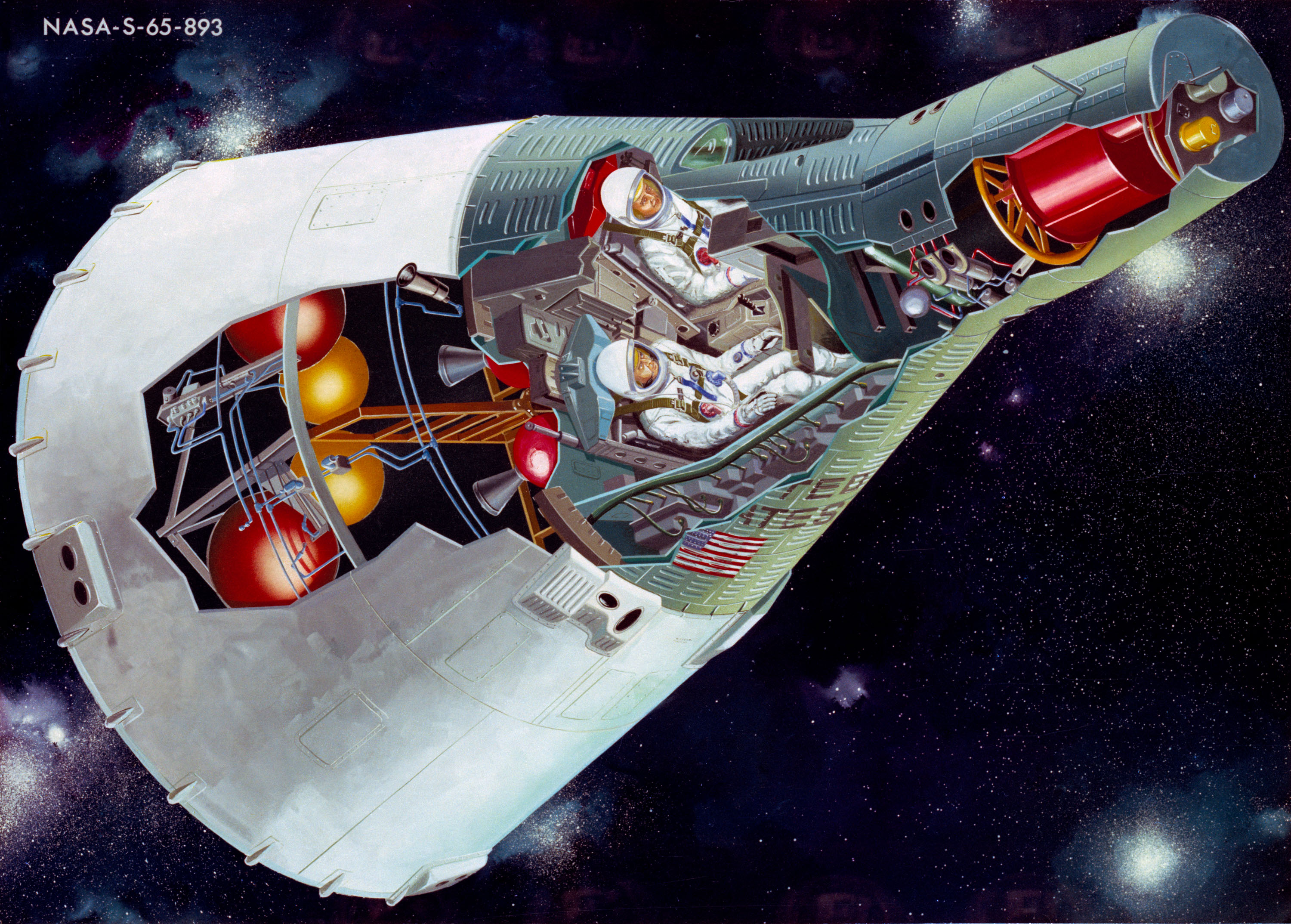 [ Original]  [ Original] |
|
|
|
Apollo
Jul 23, 2019 11:20:40 GMT -8
Post by timothylane on Jul 23, 2019 11:20:40 GMT -8
Well, the early (Mercury) flights didn't require the astronauts to do anything but sit and wait, a point made in The Right Stuff. I guess with Gemini and the spacewalks, they had to have astronauts who could do more than that. All the flights required courage, but only when they had to do more than sit did they also require genuine ability.
|
|
Brad Nelson
Administrator
עַבְדְּךָ֔ אֶת־ הַתְּשׁוּעָ֥ה הַגְּדֹלָ֖ה הַזֹּ֑את
Posts: 12,239
|
Apollo
Jul 23, 2019 15:14:24 GMT -8
Post by Brad Nelson on Jul 23, 2019 15:14:24 GMT -8
Yes, they did point out in the Gemini documentary that the astronauts didn't have much to do. But certainly it was a necessary step. The bottom end of the capsule which I think is visually pretty cool:  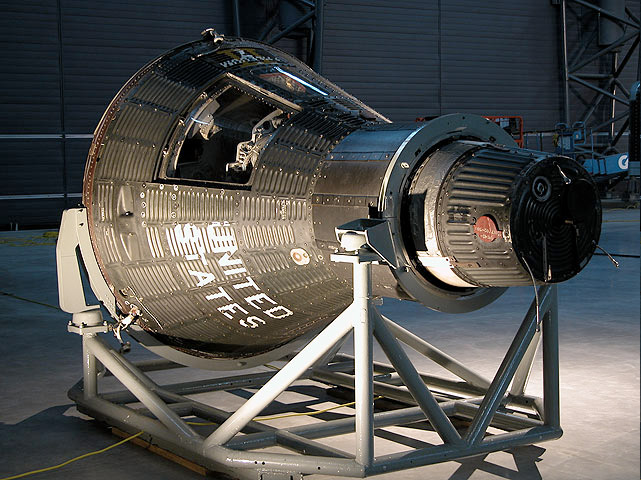 I do believe I've had the opportunity to see one of the Mercury capsules up close. They used to have one at the Pacific Science Center. For all I know, they still do. However, with a little more research (and according to this chart), the one at the Pacific Science Center is "an unflown mockup". I'm going to assume that was for training or PR purposes. |
|
|
|
Apollo
Jul 23, 2019 15:47:30 GMT -8
Post by timothylane on Jul 23, 2019 15:47:30 GMT -8
A nice chart. I noticed it included the one in Louisville, which I've seen (naturally). In fact, FOSFA met there (the museum, not the capsule itself) for a while. A sometime guest speaker, the late Dr. Bill Breuer, was a former NASA doctor and did very nice presentations on space. I think his discussion of the Challenger took place at the museum.
|
|
Brad Nelson
Administrator
עַבְדְּךָ֔ אֶת־ הַתְּשׁוּעָ֥ה הַגְּדֹלָ֖ה הַזֹּ֑את
Posts: 12,239
|
Apollo
Jul 23, 2019 16:14:31 GMT -8
Post by Brad Nelson on Jul 23, 2019 16:14:31 GMT -8
You really get an idea for how small they are. I've never seen an Apollo capsule up close. But apparently they were like a Cadillac compared to an MG Midget.  On second thought, maybe the Midget had more room. 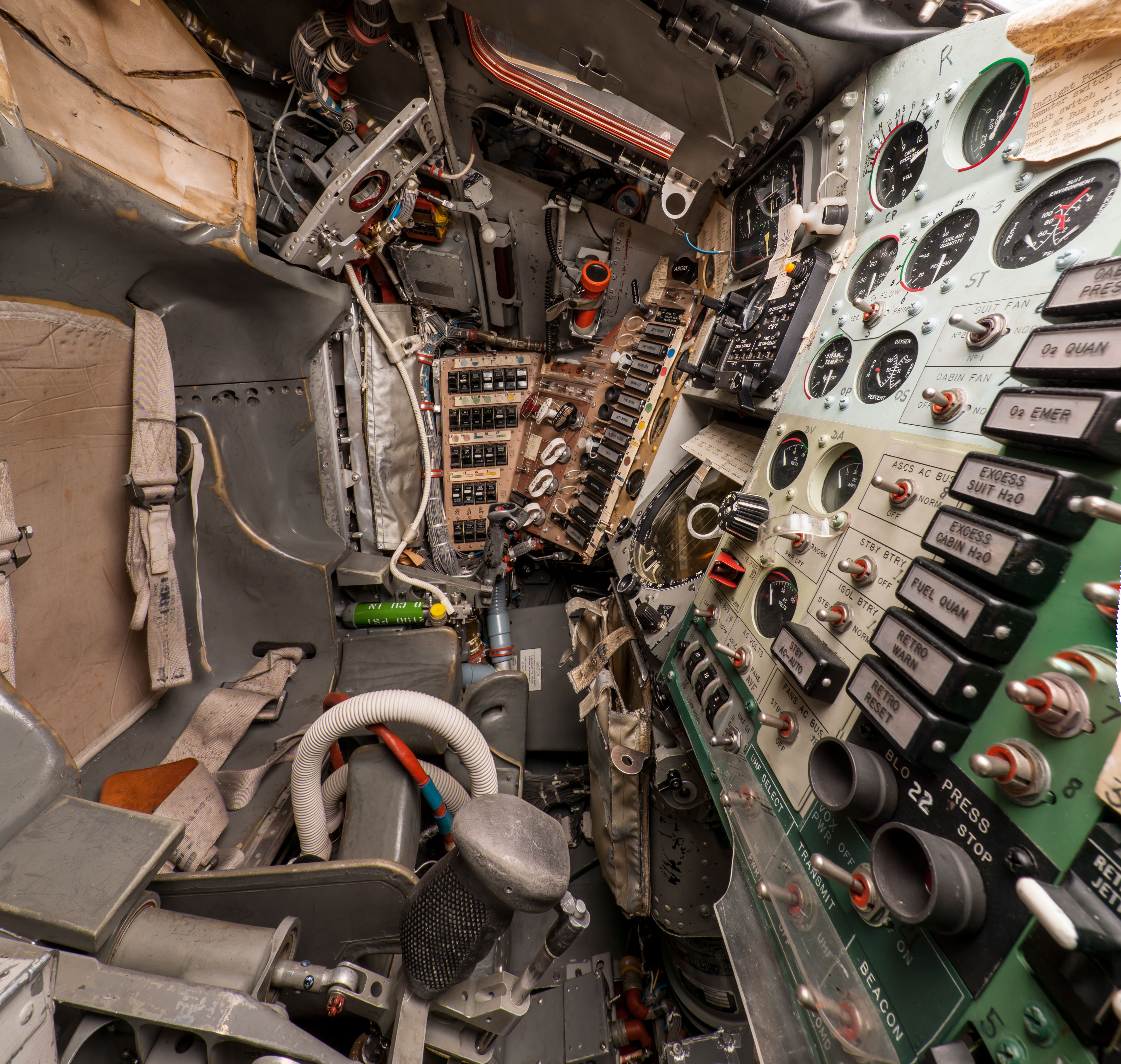 [ Quite hires original] 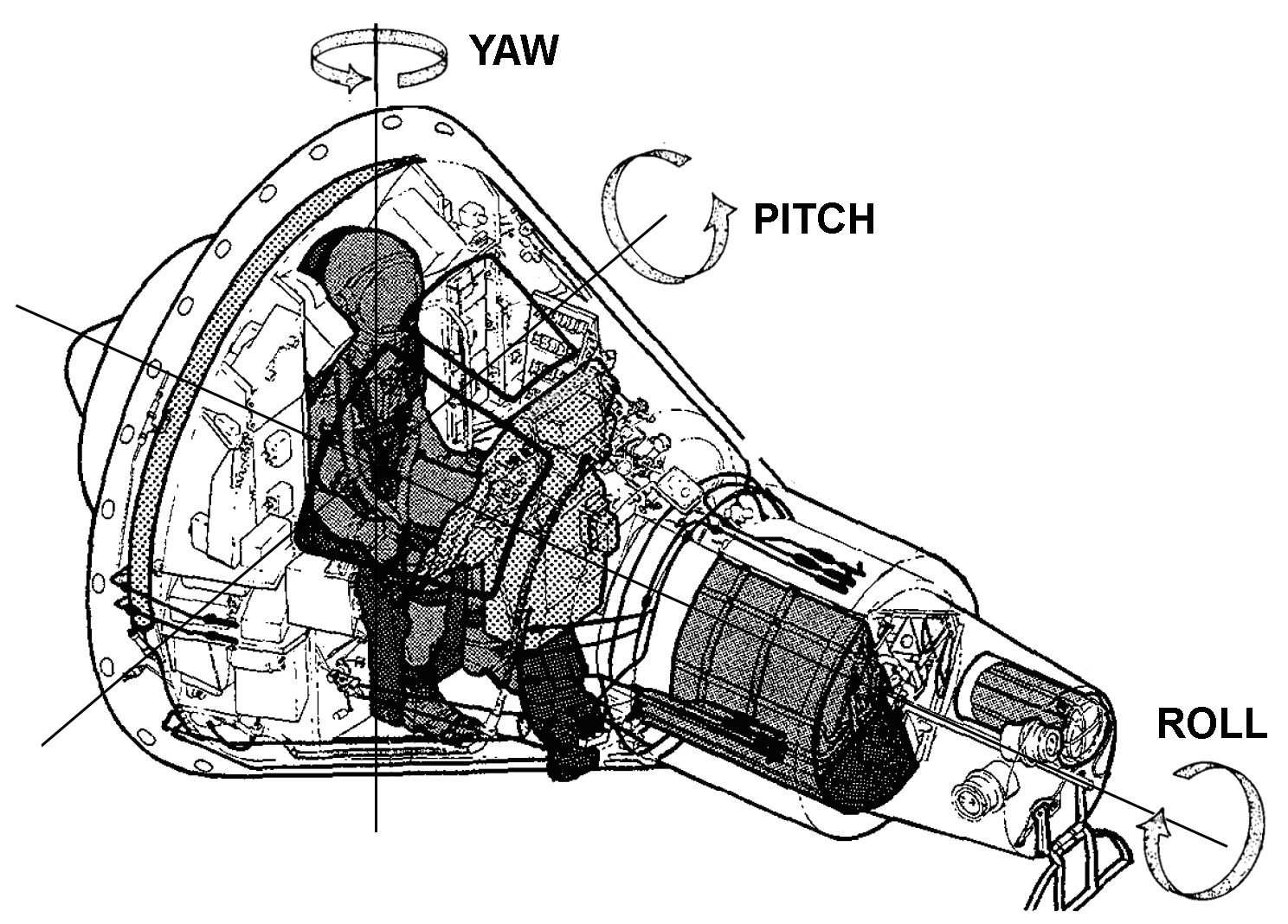 |
|
Brad Nelson
Administrator
עַבְדְּךָ֔ אֶת־ הַתְּשׁוּעָ֥ה הַגְּדֹלָ֖ה הַזֹּ֑את
Posts: 12,239
|
Apollo
Jul 23, 2019 16:42:05 GMT -8
Post by Brad Nelson on Jul 23, 2019 16:42:05 GMT -8
One of the documentaries I’ve seen recently (the one on the lunar rover) featured “conquest of space” articles in Collier’s from March 22, 1952, to April 30, 1954. The series was titled “Man Will Conquer Space Soon!” They contained some extraordinary conceptual drawings by Chesley Bonestell, Fred Freeman, and Rolf Klep, renowned magazine illustrators of the time. Wernher von Braun was the guiding light behind this. The drawings themselves are great examples of art from the period. Samples can be found on this Smithsonian page. They really are a delight. This pdf document shows you a few of the Collier’s covers. The connection to the lunar rover documentary is that Wernher had foreseen the need for some kind of rover to do work on the moon. It looked like this:  This This appears to be a source for a pdf version of the articles themselves. I downloaded the first issue. It’s 35MB but seems to work fine. |
|
|
|
Apollo
Jul 23, 2019 17:18:50 GMT -8
Post by timothylane on Jul 23, 2019 17:18:50 GMT -8
Bonestell also did art in SF magazines. The others may also have done so, but his name I recognize. Some of the art looks like stuff I saw in some books on rocketry/space when I was young. I wonder if any of the articles were by Willy Ley, a German rocket fan who escaped to America during the 30s. (I've read some material by him, one of which -- about the bombing of Peenemunde -- I read as a child. It was interesting reading it as an adult and remembering that I had read it. I've had similar reactions with other works, such as Vonnegut's "Harrison Bergeron" and Saberhagen's "Berserker".) A space enthusiast, he died less than a month before Apollo 11 took off. A crater on the far side of the Moon is named for him.
|
|
Brad Nelson
Administrator
עַבְדְּךָ֔ אֶת־ הַתְּשׁוּעָ֥ה הַגְּדֹלָ֖ה הַזֹּ֑את
Posts: 12,239
|
Apollo
Jul 23, 2019 17:35:43 GMT -8
Post by Brad Nelson on Jul 23, 2019 17:35:43 GMT -8
Willy Ley authored “A Station in Space” in the March 22, 1952 Collier’s edition, “Inside the Moon Ship” in the October 18, 1952 edition, and “Inside the Lunar Base” in the October 25, 1952 edition. This link, which I had already posted, contains that information and information on other authors of these articles, including writers Fred L. Whipple, Joseph Kaplan, Heinz Haber and, of course, Wernher von Braun. I've downloaded the articles to my computer and then uploaded them to my iCloud storage. I'll browse through them on my iPad. It should be a treat.
Willy Ley's books on Amazon. My birthday is tomorrow. If anyone is looking for ideas, I'd love a copy of what appears to be the hard cover version of these articles: Conquest of the Moon. A used one is only $75.00. Here's a book by Willy Ley that is in the public domain: Stand by for Mars! |
|
kungfuzu
Member
Posts: 10,470
Member is Online
|
Apollo
Jul 23, 2019 18:02:33 GMT -8
Post by kungfuzu on Jul 23, 2019 18:02:33 GMT -8
PBS just aired "Chasing the Moon" which covered much of the space program before Apollo 11. The episode ended with Apollo 8, the first mission in which man broke free of earth's gravity. Frank Borman and his fellow astronauts went to the moon and back in this first Apollo mission. This is well worth watching.
The scene of the Saturn V lifting off, which I mentioned earlier, was in this episode. What a spectacular film clip.
|
|
Brad Nelson
Administrator
עַבְדְּךָ֔ אֶת־ הַתְּשׁוּעָ֥ה הַגְּדֹלָ֖ה הַזֹּ֑את
Posts: 12,239
|
Apollo
Jul 23, 2019 19:58:25 GMT -8
Post by Brad Nelson on Jul 23, 2019 19:58:25 GMT -8
"Chasing the Moon" is on my list of things to watch. But I didn't know it was on PBS and I haven't found it anywhere else.
|
|
kungfuzu
Member
Posts: 10,470
Member is Online
|
Apollo
Jul 24, 2019 6:45:43 GMT -8
Post by kungfuzu on Jul 24, 2019 6:45:43 GMT -8
Happy Birthday Brad! On this day in 1969, Apollo 11 returned to earth and touched down in the Pacific Ocean. Given the day and interest in this string, I thought the following appropriate. MoonFor the arm-chair astronaut. |
|
|
|
Apollo
Jul 24, 2019 7:01:23 GMT -8
Post by timothylane on Jul 24, 2019 7:01:23 GMT -8
Mark Steyn's most recent Sunday night song of the week was "Fly Me to the Moon". He notes that the original title was "In Other Words", because the writer considered that the basic point. But later, with the rise of the space program . . .
And, indeed, happy birthday, Brad. I miss ST, but still spend a lot of my time here. In fact, in at least one way it's actually an improvement. Non-forum articles on ST couldn't be edited after sending them, which was sometimes a problem. Here one can always edit.
|
|
kungfuzu
Member
Posts: 10,470
Member is Online
|
Apollo
Jul 24, 2019 7:29:34 GMT -8
Post by kungfuzu on Jul 24, 2019 7:29:34 GMT -8
In this case, "In Other Words" is not the point, so it a good thing the writer changed the title.
|
|